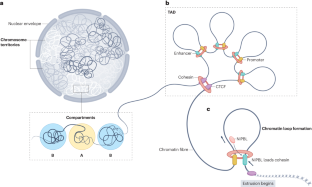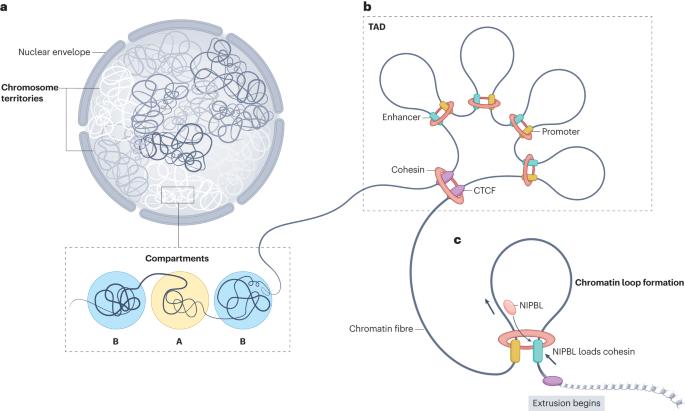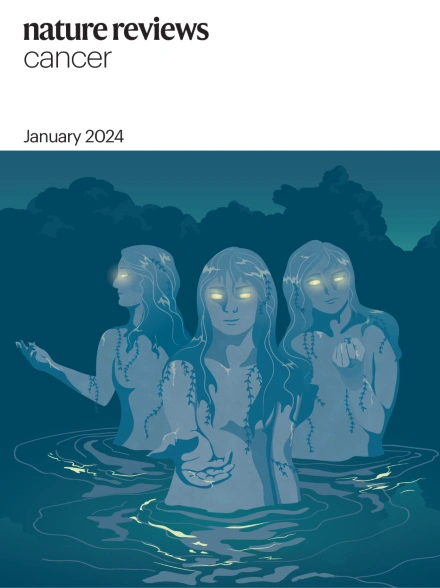Long-range gene regulation in hormone-dependent cancer
IF 72.5
1区 医学
Q1 ONCOLOGY
引用次数: 0
Abstract
The human genome is organized into multiple structural layers, ranging from chromosome territories to progressively smaller substructures, such as topologically associating domains (TADs) and chromatin loops. These substructures, collectively referred to as long-range chromatin interactions (LRIs), have a significant role in regulating gene expression. TADs are regions of the genome that harbour groups of genes and regulatory elements that frequently interact with each other and are insulated from other regions, thereby preventing widespread uncontrolled DNA contacts. Chromatin loops formed within TADs through enhancer and promoter interactions are elastic, allowing transcriptional heterogeneity and stochasticity. Over the past decade, it has become evident that the 3D genome structure, also referred to as the chromatin architecture, is central to many transcriptional cellular decisions. In this Review, we delve into the intricate relationship between steroid receptors and LRIs, discussing how steroid receptors interact with and modulate these chromatin interactions. Genetic alterations in the many processes involved in organizing the nuclear architecture are often associated with the development of hormone-dependent cancers. A better understanding of the interplay between architectural proteins and hormone regulatory networks can ultimately be exploited to develop improved approaches for cancer treatment. This Review discusses the impact of steroid-receptor-mediated modifications of long-range chromatin interactions on transcriptional heterogeneity and the initiation, progression and therapy response of hormone-dependent cancers.


激素依赖性癌症的长链基因调控。
人类基因组被组织成多个结构层,从染色体区域到逐渐变小的亚结构,如拓扑相关结构域(TAD)和染色质环。这些亚结构统称为长程染色质相互作用(LRIs),在调节基因表达方面发挥着重要作用。TAD是基因组中包含基因组和调控元件的区域,这些基因组和调节元件经常相互作用,并与其他区域绝缘,从而防止广泛的不受控制的DNA接触。TADs内通过增强子和启动子相互作用形成的染色质环是有弹性的,允许转录异质性和随机性。在过去的十年里,很明显,3D基因组结构,也称为染色质结构,是许多转录细胞决定的核心。在这篇综述中,我们深入研究了类固醇受体和LRIs之间的复杂关系,讨论了类固醇受体如何与这些染色质相互作用并调节这些相互作用。组织核结构的许多过程中的基因改变通常与激素依赖性癌症的发展有关。更好地理解结构蛋白和激素调节网络之间的相互作用,最终可以用于开发癌症治疗的改进方法。
本文章由计算机程序翻译,如有差异,请以英文原文为准。
求助全文
约1分钟内获得全文
求助全文
来源期刊

Nature Reviews Cancer
医学-肿瘤学
CiteScore
111.90
自引率
0.40%
发文量
97
审稿时长
6-12 weeks
期刊介绍:
Nature Reviews Cancer, a part of the Nature Reviews portfolio of journals, aims to be the premier source of reviews and commentaries for the scientific communities it serves. The correct abbreviation for abstracting and indexing purposes is Nat. Rev. Cancer. The international standard serial numbers (ISSN) for Nature Reviews Cancer are 1474-175X (print) and 1474-1768 (online). Unlike other journals, Nature Reviews Cancer does not have an external editorial board. Instead, all editorial decisions are made by a team of full-time professional editors who are PhD-level scientists. The journal publishes Research Highlights, Comments, Reviews, and Perspectives relevant to cancer researchers, ensuring that the articles reach the widest possible audience due to their broad scope.
 求助内容:
求助内容: 应助结果提醒方式:
应助结果提醒方式:


